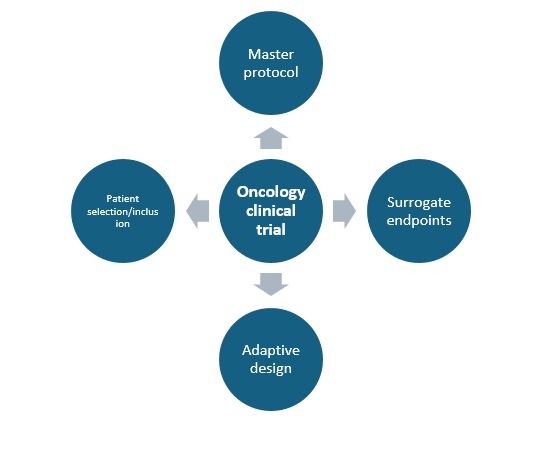Crafting impactful oncology clinical trial protocols requires a strategic approach to ensure rigorous research, patient safety, and meaningful outcomes. Explore key considerations and best practices for designing effective protocols in the dynamic landscape of oncology research.
Introduction to designing effective oncology clinical trial protocols
According to the World Health Organization (WHO), cancer which includes malignancies and neoplasms is a leading cause of death worldwide accounting for nearly 10 million deaths in 2020. Lifestyle changes, environmental factors, genetic causes, and viral infections are responsible for the increasing number of cancer cases worldwide necessitating novel treatment approaches and preventive measures to curb morbidity and mortality associated with this condition. Despite large increases in the number of oncology clinical trials worldwide, death rates with cancer continue to rise and the disease has a significant negative impact on patients’ quality-of-life. As cancer is a variable condition driven by molecular and genetic factors, it is often difficult to develop treatments for it and an estimated 90% of cancer clinical trials are expected to fail. Inability of traditional clinical trials to demonstrate suitable endpoints, restricted recruitment criteria and incorrect patient populations, and funding and technological challenges are some of the factors that hinder the progress and success of oncology clinical trials.
Since cancer is a heterogeneous disease, development of therapies that target cancer from an organ site or histological subtype may not always be ideal as each tumor type has a specific immune or genomic profile which varies between patients. Therefore, traditional randomized controlled trials that are based on average population risk-benefits are not useful for development of anticancer therapies. This has led to the development of personalized medicine trials that involve patient selection based on genomic or immune biomarkers and patient-centered trials that require customization of therapy based on tumor biomarkers which are dynamic.
Considering the heterogeneity of different cancers, histological characteristics, tumors, and genomic factors, the design of oncology clinical trial protocols should ideally focus on the following factors shown in the figure below that can help boost chances of success.
Surrogate endpoints
Surrogate endpoints form an important part of oncology clinical trial protocols as they act as a substitute for a clinical endpoint or treatment effect that has a long-time course to the event. Surrogate endpoints correlate with the true endpoint but are observed earlier in the study and thus provide a faster and more cost-effective means for conducting the trial. In oncology trials where overall survival is often the endpoint, biomarkers, and surrogates like progression-free survival (PRS), tumor shrinkage, recurrence-free survival, overall response rate (ORR), and biomarker changes are used. Although these are widely used, it is necessary that surrogate endpoints be carefully validated prior to their use to ensure a meaningful correlation between the surrogate and a clinical benefit. The United States Food and Drug Administration (FDA) has released a draft guidance that describes the criteria and acceptance for endpoints in oncology research which may be based on tumor assessments or symptoms and enlists the advantages and disadvantages of each type. This guidance further recommends the type of endpoint to be used depending upon the trial design and analyses handling in case of missing data issues.
Clinical trial designs
Single-arm studies can be used in cases of absence of comparator treatments or when tumor regression is strongly linked to the study treatment. Non-inferiority trials involve demonstrating that the treatment is not less effective than a standard regimen (historical data) by a prespecified amount or
non-inferiority margin. Trial designs for radiotherapy and chemotherapy protectants involve demonstrating both efficacy of the treatment and absence of the effect on the anticancer agent. In line with traditional trials, Phase I oncology trials involve determination of the maximum tolerated dose (MTD) in a small cohort of patients, Phase II studies study the safety and efficacy of the experimental treatment in patients with a specific cancer type that are usually stratified by criteria such as molecular characteristics and stage, and Phase III studies are comparisons with existing treatment(s) in a larger cohort of patients.
Protocol details
A comprehensive protocol should be developed and include details such as endpoints, study design, statistical analysis plan (SAP), missing data handling/censoring, details on case report forms (CRF) and patient-reported outcome (PRO) measures to be used, and independent ethics committee (IEC)/institutional review board (IRB) information. Specifying these details prospectively helps to avoid bias and provides a clear pathway to be followed by investigators especially in cases of multi-center trials.
Adaptive design
These trial designs are based on the principle of employing flexibility in clinical research allowing for changes and modification to be made as the trial progresses. With regards to oncology treatment trials, designs include adaptive dose finding studies, randomization, and biomarker-guided adaptive designs. This is particularly important from a cancer trial standpoint as they increase statistical power, decrease the number of patients required in the trial, and help to choose better treatments based on an individual’s biomarker profile. Thus, incorporating an adaptive trial design in oncology trials is beneficial and should be considered in the protocol.
Patient selection/inclusion
Tumor heterogeneity, genetics, and biomarker profile of cancer patients affect their response to treatment. Targeted molecular therapies for cancer dictate the need for a specific patient population that is uniform in terms of their genetic and molecular make-up to be able to evaluate the safety and efficacy of oncology compounds in a population wherein the treatment is expected to benefit the most. Although precision medicine trials can help identify a particular patient pool, they may be restrictive and limited in the type of patients and pose recruitment challenges and high drop out rates. Thus, patient selection requires a fine balance between the ‘ideal’ candidate and applicability to a wider patient group. Oncology protocols must explicitly state the inclusion/exclusion criteria and handling of dropouts and missing data.
Master protocol
Unlike traditional trials that evaluate one drug/treatment against a comparator in patients with certain criteria that are matched across the groups, oncology trials are different as large variabilities usually exist in the patients baseline characteristics. Further, treatments are targeted to certain molecular characteristics, and it is usually not feasible ethically or commercially, to conduct a trial for every patient/tumor sub-type. Master protocols (basket, umbrella, and platform) include multiple sub-studies that simultaneously evaluate more than one investigational treatment in patients with cancer and/or a selected treatment in patients with more than one tumor type and are preferred for oncology trials as they help in the recruitment process and allow patients with certain molecular markers to participate in multiple trials.
Since oncology trials are expensive, lengthy, and restrictive in nature due to patient and tumor heterogeneity, the entire field is moving in the direction of personalized medicine. Considering the above-mentioned points will help pave the way forward for precision medicine and help accrue data quickly and effectively along with allowing for changes to be made depending upon the success/failure observed with treatments.
Read More : Endocrinology and Diabetology Disorders and Current Developments of Novel Treatments Under Clinical
References
1) Adaptive clinical trial designs in oncology – Zang – Chinese Clinical Oncology (amegroups.org)
2) Clinical trial design in the era of precision medicine – PubMed (nih.gov)
3) Adaptive clinical trial designs in oncology – PMC (nih.gov)
4) Biomarker-driven patient selection for early clinical trials : Current Opinion in Oncology (lww.com)
6) Surrogate Endpoint Resources for Drug and Biologic Development | FDA






